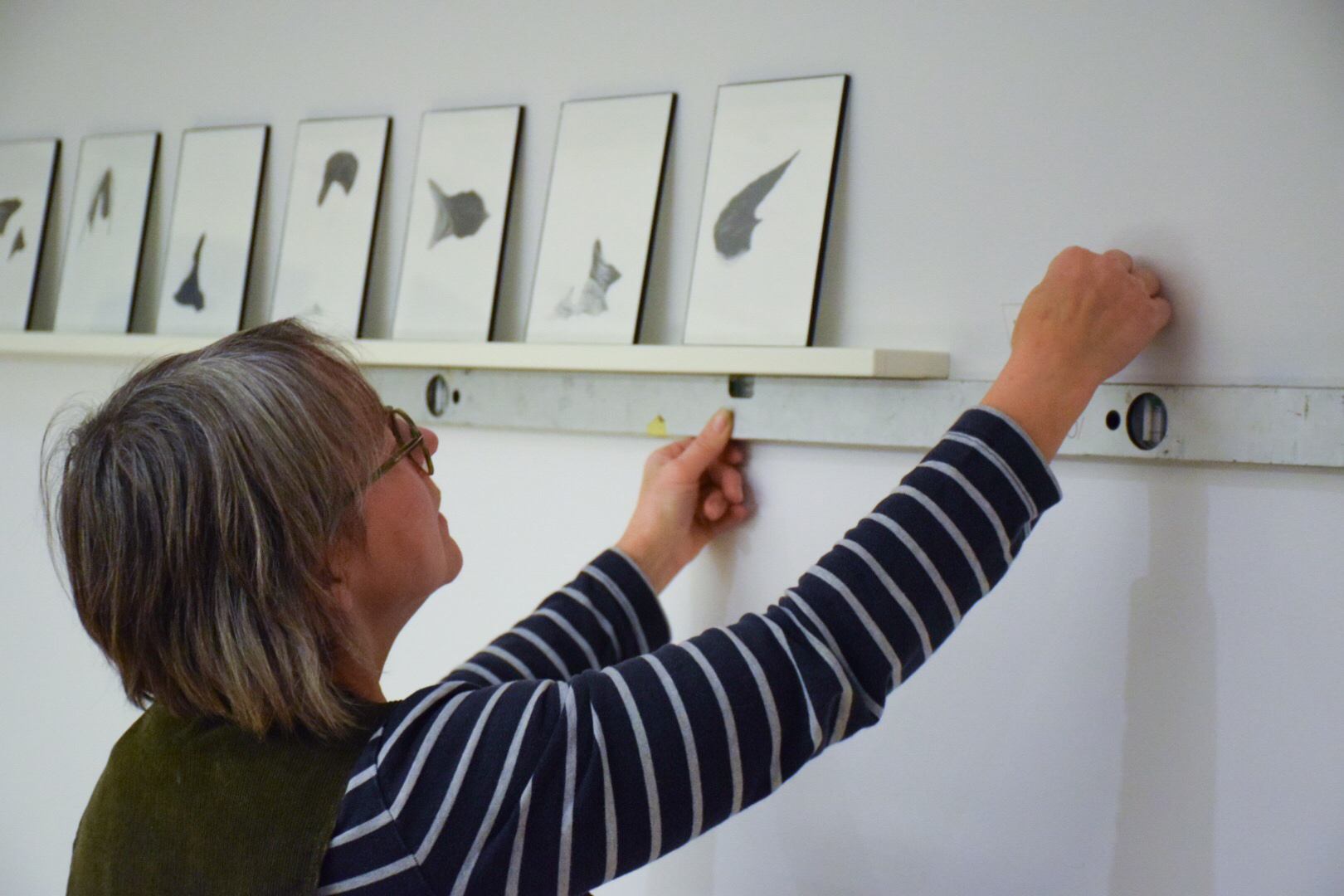Birgitta Silfverhielm has created a collection for Stockholm Academic Forum (STAF) including works by artists trained at two of STAF’s member academies, Konstfack University of Arts, Crafts and Design, and the Royal Institute of Art. A similar strategy has also been employed by Creo Arkitekter, who have designed the interior of STAF’s premises, which organically relate the art and the interior design to STAF and its members.

The collection is composed of ten artworks that demonstrate a great breadth both in terms of the age, generation and gender of the artists as well as in techniques, expressions and materials. Sculpture, drawing, textile and painting are brought together in a fine balance, and the works have been selected in order to complement and comment on the activities carried out at the premises, as well as on the function and design of the spaces.
Birgitta works in a planned but also intuitive manner while creating her collections, paying great attention to the spaces’ characteristics and symbolic values as well as the people who work on the premises. She describes her process as an open-ended gathering of impressions, materials and information from the site, which are then compiled and materialised in the artworks that she selects.
This is how Birgitta describes her work: “I want to provide a key and give rise to thoughts of how things touch each other and what they evoke in one another.”
“Birgitta’s work process is methodically intuitive and she constantly reevaluates her ideas in order to avoid stagnating in habitual patterns.”
At STAF’s entrance, Karin Mamma Andersson’s rya rug appears on a feature wall at the far end of the corridor. At close range, one notices the exquisite craft that has gone into the work, executed by Studio Märta Måås-Fjetterström, as well as the various colour fields that appear to be completely abstract. From a distance, however, the motif emerges: it is an intimate depiction of a woman. Karin Mamma Andersson’s rya rug is the work that has aroused most interest among the employees at STAF. They experience it as exciting, beautiful and perhaps also provocative and challenging: “[It is] a work that raises notions of how and by whom female genitals should be portrayed,” says a staff member.
From the corridor one catches glimpses of artworks hanging in the workrooms. In the canteen and the lounge there are collections of works that both relate to each other and to the environment. On the canteen walls hang two works, one by Jan Manker, Myra [Ant], and a print, Möte [Meeting], by Pierre Olofsson. Born in 1941 and 1921 respectively, the two artists represent different generations and different styles. Jan Manker’s art often presents the viewer with riddles or rebuses and so perhaps also here. The canvas shows an ant in two parts, with a long, sharp shadow against a grey-to-green-to-pink-shifting backdrop that provides no clue as to how to interpret the pictorial space.
Lacking a point of reference, the ant could be gigantic or minuscule, which correlates perfectly with Manker’s way of questioning and exploring the boundaries of perception. Olofsson’s work reflects the artist’s idiom with a touch of Concretism and 1950s Modernism. The motif’s circular-shaped colour fields cut into one another in an eternity pattern.
Three women artists share the space of the lounge. In addition to Karin Mamma Andersson’s rya rug, there are two sculptures, one by Ingrid Olsson and the other by Anna Fjällbäck. The two sculptures are installed together on a shared base and both elaborate on the shape of trees. Ingrid Olsson’s tall, strict, white stoneware Vinterträd [Winter Tree] extends upwards, while Anna Fjällbäck’s colourful and playful Mutanti spreads its tufted branches. The sculptures meet in the act of growing, a metaphor of how students develop through learning.
The collection encounters the employees of STAF in their everyday life and Birgitta has infused her working process with the ambition of anchoring the collection with the staff. She explains, discusses and evaluates, in order to identify art that will feel as if it belongs in the place and context and has the potential of becoming a natural part of STAF. As part of her work, Birgitta conducts a guided tour of the art for the staff when the collection has been installed. She explains some of her ideas and methods that have gone into her creation of the collection, but first and foremost she attempts to facilitate the staff’s understanding of the works so they can discover and explore the art on their own. It is not important that everyone finds the art aesthetically pleasing but that it provokes interest, curiosity and creates discussions.
She points to tiny, subtle details that the viewer may not pay attention to at first glance. Such as the small, tufted eyes on one side of Anna Fjällbäck’s Mutanti, which are not immediately apparent but, on close inspection, provide the sculpture with a completely new human dimension.